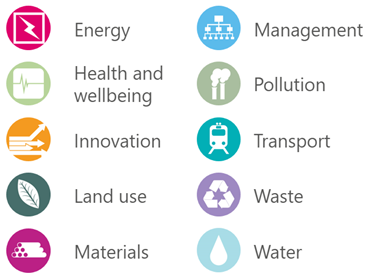The importance of BREEAM
With each passing day, development at our new production facility in Witney has been advancing. Whilst the build has been moving through the various stages of construction, we have always kept sustainability at the forefront of our actions. As a certified B Corp, member of the United Nations Global Compact, and supporter of the United Nations Sustainable Development Goals, our sustainability agenda is strong and so we of course wanted our new Witney building to reflect this.
We are incredibly proud that the building is set to be included in the top 25 percent of buildings assessed through the Building Research Establishment Environmental Assessment Method (BREEAM). The BREEAM certification recognises the highest levels of environmental, social and economic sustainability performance. To achieve this status, we are working closely with the construction consultancy, Ridge and Partners LLP. Recently we had the pleasure of catching up with their Senior Sustainability Consultant and the conversation certainly highlighted how important a BREEAM certification is in the context of a sustainable business environment.
How important is it, with regards to the construction industry today, to achieve BREEAM certification?
BREEAM is a leading sustainability assessment for the building environment. It provides a framework to encourage sustainable design, looking at the various aspects of new buildings and refurbishment or fit-out projects which allow a scheme to benchmark its performance against other certified buildings.
The key purpose of BREEAM is to reduce the environmental impact of building designs in a quantifiable manner. The requirements are designed to drive improvement beyond building regulations and standards, focusing on the needs and wellbeing of the building users. By achieving BREEAM certification, a scheme can robustly demonstrate that it has incorporated a range of sustainability measures within the design and construction process.
How does BREEAM certification differentiate Owen Mumford from other businesses?
Owen Mumford engaged with the BREEAM process from the beginning and emphasised to the project team that achieving certification is a key aspiration for the project. BREEAM enables the company to compare its developments to other BREEAM-rated projects, ensuring that a range of environmental issues are addressed throughout the design and construction stage. Certifying a building against BREEAM standards demonstrates the desire to build better and to build more sustainably.
What does the certification process look like - if a building is built to the specification, how is the certification judged and awarded to the completed structure?
The certification process and audit are dependent on robust evidence – evidence provided for the final stage must reflect the completed building and demonstrate all implemented measures. For example, a good way of demonstrating compliance is by providing as-built drawings or specifications, which are then verified by the BREEAM assessor during the final site inspection. A site inspection report, including photographs as proof of installation/implementation, is an essential part of the final evidence package.
Following this, all evidence is submitted to the BRE by the BREEAM assessor. This package of information is subjected to a robust quality assurance audit, which is followed by a certification decision. If any non-conformity is identified, or the auditor requires further evidence for clarity, the project team has six months to submit this. If the audit process is passed, a certificate is issued, identifying the project team’s members and the BREEAM rating achieved. The certificate is issued to the BREEAM assessor, who will circulate this to the client and, where relevant, to the project team.
What type of sustainability goals does BREEAM recognise, and how does it measure them?
BREEAM assesses buildings based on a wide range of environmental issues:

There are different sustainability goals under each of these categories, some of which are compulsory, some optional. At the start of a project, a strategy is created by the BREEAM assessor, usually in collaboration with the design team. The strategy remains largely the same throughout the design and construction stages, although there are always some changes, depending on feasibility, cost and other factors. For example, under the pollution section, a flood risk assessment is required. Credits can be awarded where the development manages surface water run-off well, or where watercourse pollution is minimised.
Could Owen Mumford lead the way for other businesses in the area to prioritise sustainable infrastructure? What are the benefits to organisations for doing so?
The rising demand for environmental assessments is prompting local authorities to include BREEAM as a planning requirement for new developments. Councils are recognising the importance of mitigating climate change and the need to assess buildings in a standardised, comparable way.
As more developers choose to have their buildings certified, others are inspired to do the same, driving change. Businesses can benefit from certifying their new or refurbished buildings, providing credible evidence that they care about sustainability and their environmental impact as well as the economic and social benefits of their buildings.
What advice would you give local businesses who are attempting to secure a BREEAM certification?
The most important factors in successfully securing a BREEAM certification are an active, engaged project team and early involvement of a BREEAM assessor (ideally well before planning is due to be submitted).